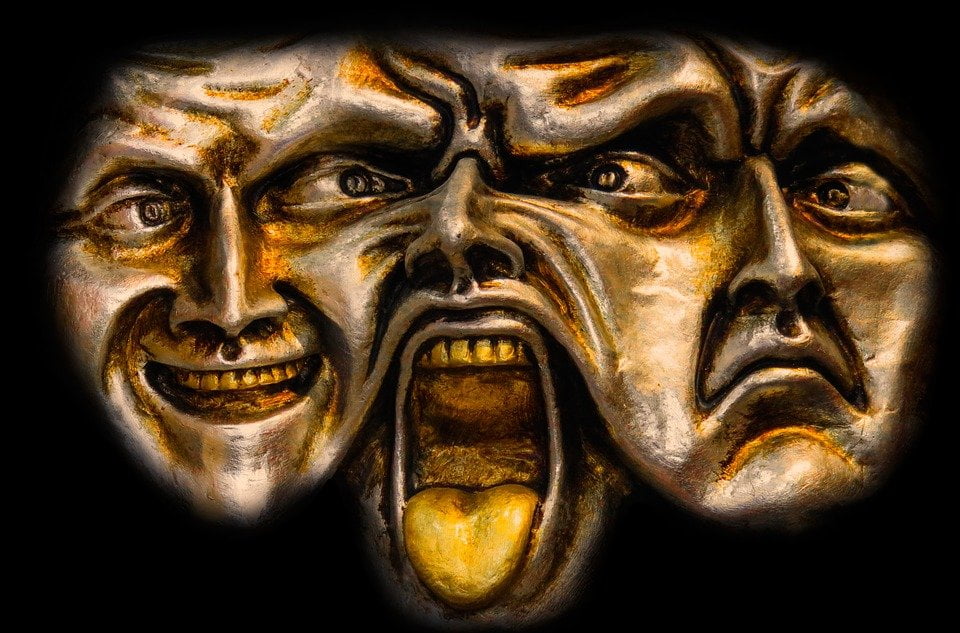It is widely believed that people with mental illnesses are more susceptible to their exacerbation in the spring and autumn periods. We decided to check whether the course of such diseases is actually associated with seasonality.
The phrase “spring exacerbation” is quite common - it is used in Media, blogs and even art titles works. Russian rock band "The End of the Film" sings “Spring is the time of schoolchildren and suicides,” and “Cockroaches!” They even released a song with the title "Spring aggravation". Autumn exacerbation is best known as autumn depression. Popular online author Martha Ketro writes: “In November, every decent person should be depressed for three to ten days. If for some reason you don’t lie around like an aluminum spoon, this indicates an insufficiently subtle mental organization. Therefore, at least don’t confess to anyone, don’t embarrass yourself.”
In the current International Classification of Diseases (ICD), tenth revision, there is only one position in section F (“Mental and Behavioral Disorders”), associated with seasons and seasons, is seasonal depressive disorder (F.33). In ICD-11, the transition to which begins on January 1, 2022, the dependence of mental state on the season interpreted a little wider. A seasonal pattern is already considered possible in any of the affective disorders (not only depression, but also bipolar affective disorder (BAD), as well as cyclothymia). However, the absence of clarification in the ICD about the seasonal nature of other diseases does not mean that such studies have not been conducted.

The most obvious reason for the connection between mental state and the weather outside is perhaps sunlight and temperature. Opinion polls They say that up to a third of Russians report an autumn decline in mood (not to be confused with a clinically diagnosed depression). Based on general logic and personal observations, it can be assumed that in parallel with the reduction of daylight hours and a drop in temperature, a person’s mood tends to worsen, that is, he develops depressive disorders. And vice versa: as soon as the day begins to increase, and the sun begins to shine longer, manic accents will begin to appear in mentally unstable people. However, this everyday hypothesis simplifies the situation too much. It is also impossible to fit some diseases, in particular schizophrenia, into such a pattern. However, in some ways the everyday hypothesis coincides with the observations of scientists.
A team of researchers from Zurich conducted a longitudinal cohort study observation (more than 20 years) and found out that the autumn-winter period actually accounts for more depressive episodes. Moreover, women are five times more susceptible to seasonal deterioration than men. In the English-speaking space already in 1998 used The term that explains the dependence of the psychological state on the weather is seasonal affective disorder (SAD). Since the majority of those observed complained of worsening mood precisely in the autumn-winter period, the main reason for its occurrence was counted just a decrease in sunlight, and in 2011 they proposed a method of treating such a disorder - light therapy. However, four years later appeared doubts about its effectiveness and questions about the methodology of the research. At the same time, scientists agreed that autumn-winter depression really exists as a separate type of disorder. And in 2015, scientists discoveredthat, in addition to autumn-winter depression, there is also an inverted one - summer, as well as assumedthat a predisposition to depression may be determined by the season in which a person was born. Thus, mice born in summer were definitely happier than “autumn-spring” and “winter” ones, while “winter” ones were less susceptible to depression compared to “autumn-spring” ones.
Also, in the period from late autumn to early spring, older people experience a greater decline in cognitive function than in other periods. Scientists dialed a group of 3,353 people, some of whom had Alzheimer's disease (AD), and examined their memory and cognitive abilities using several techniques: neuropsychological testing, analysis of cerebrospinal fluid biomarkers, as well as autopsies and measurements of brain gene expression. As a result of the study, it was proven that older people, both with and without AD pathology, lose cognitive functions faster in the autumn-winter period compared to the spring-summer period.

Australian scientists set out to determine what time of year the manifestation (first appearance of symptoms) of schizophrenia most often occurs. Having analyzed requests to medical institutions for six years, they done conclusion that the peak occurs in August (adjusted for the Southern Hemisphere - at the end of winter and early spring. Austrian scientists agree with Australian scientists. Having collected a database of 110,735 patients who sought help in the period 2003–2016, they noted Hospitalizations peak in January and June. But with bipolar disorder (also known as manic-depressive disorder), we can draw the same conclusion about the seasonality of hospitalizations (at any stage) it didn't work out. At the same time, the change of peaks really is seasonal - "manic episodes peak in the spring/summer and to a lesser extent in the fall, depressive episodes peak in early winter and to a lesser extent in the summer, mixed episodes peak in early spring or mid/late summer." With this conclusion agree and Australian scientists who analyzed data from 27,255 hospitalizations of patients with bipolar disorder: in the spring, the maximum number of admissions to the hospital was with manic and hypomanic symptoms.
In addition to the manifestation of schizophrenia, the peak of suicides occurs in spring and summer. Scientists analyzed data from Greece, Norway and Australia (again adjusted for the other hemisphere) and found out, that per 100,000 people in spring and winter there are on average two more suicides than in winter and autumn.
And Fotis Papadopoulos, professor of psychiatry at Uppsala University (Sweden), notesthat if we take winter as a starting point, then in the spring the suicide rate increases by as much as 20–60%. Thus, the group’s song “The End of the Film” really does not contradict scientific data.
And although scientists have already clearly established the dependence of the exacerbation of various disorders on the time of year, there is still no consensus on what causes this. The main two hypotheses are either length daylight, or is it still temperature environment.
Thus, it is indeed possible to talk about an autumn or spring exacerbation, meaning by the first a decrease in mood, and by the second, causeless euphoria, but it should be taken into account that there are people with inverted cycles. At the same time, given that many of the analyzed diseases are quite dangerous, you should not ignore their symptoms, explaining everything by the change of seasons, but it is better to contact specialists in a timely manner who can choose the right treatment.

Is it true
Read on the topic:
- How to distinguish clinical depression from the blues
- How to deal with a person with depression. Instructions
If you find a spelling or grammatical error, please let us know by highlighting the error text and clicking Ctrl+Enter.






